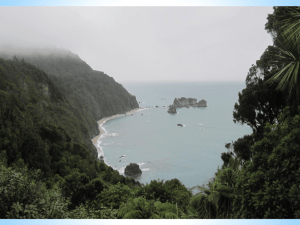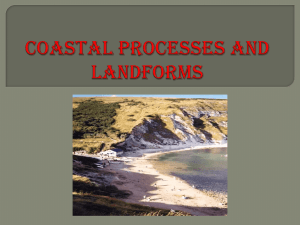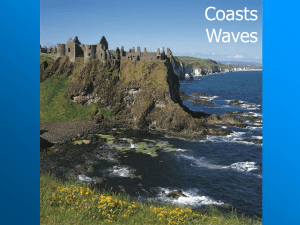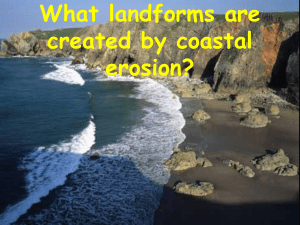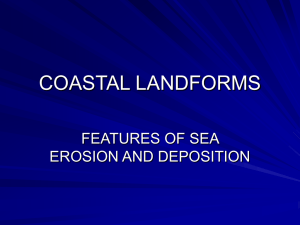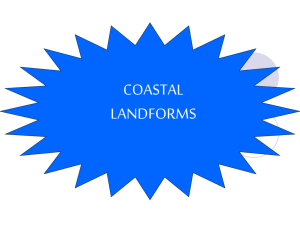Coastal Processes: Erosion & Landforms
advertisement
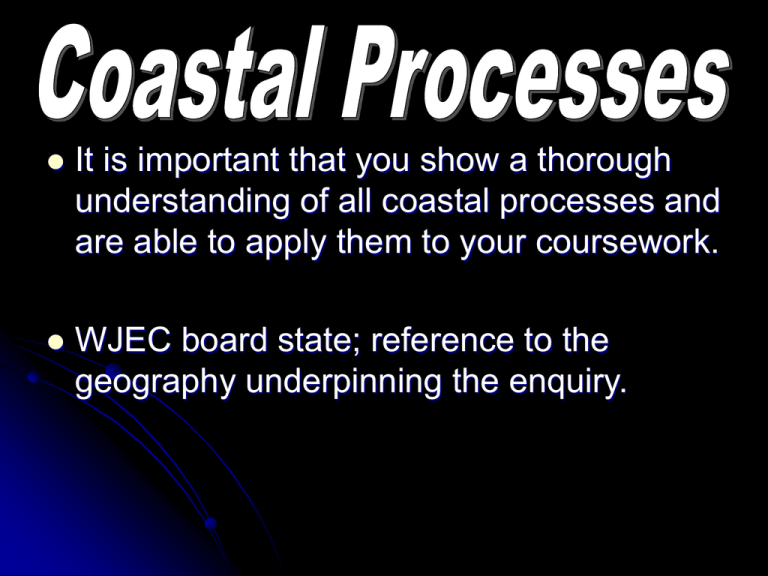
It is important that you show a thorough understanding of all coastal processes and are able to apply them to your coursework. WJEC board state; reference to the geography underpinning the enquiry. The coast is constantly changing due to the effects of land, air and marine processes. The dominant process results from the action of waves Waves are usually created by the transfer of energy from the wind blowing over the surface of the sea. Why do waves break? Waves are the result of the wind blowing over the sea. As they approach land they break. The bottom of the wave touches the sand and slows down due to increased friction. The top of the wave becomes higher and steeper until it topples over. Swash and backwash Backwash Swash Note: Backwash is always at right angles to the beach Why are waves generally larger in the south west? Wave energy depends on the fetch, the strength of the wind and the length of time over which the wind has blown. fetch = the distance over which the wind has blown Look at an atlas or a wall map to find out the largest fetch around the British Isles. Types of waves What do you know about waves? Processes of erosion Processes of erosion Attrition Materials carried by the waves bump into each other and so are smoothed and broken down into smaller particles. Hydraulic action This process involves the force of water against the coast. The waves enter cracks (faults) in the coastline and compress the air within the crack. When the wave retreats, the air in the crack expands quickly, causing a minor explosion. This process is repeated continuously. Corrosion This is the chemical action of sea water. The acids in the salt water slowly dissolve rocks on the coast. Limestone and chalk are particularly prone to this process. Abrasion/Corrasion This is the process by which the coast is worn down by material carried by the waves. Waves throw these particles against the rock, sometimes at high velocity. Do you know your coastal processes? Landforms of coastal erosion 1) Headlands and Bays 2) Cliffs and Wave Cut Platforms 3) Caves, Arches, Stacks and Stumps Headlands and bays How are cliffs and wave-cut platforms formed? Wave-cut platform The waves attack the base of the cliff through the processes of abrasion, corrosion, hydraulic action and attrition. Over time the cliff will be undercut and a wave-cut notch is formed. Eventually the cliff becomes unstable and collapses. Further cliff retreat will form a wave-cut platform. How are caves, arches, stacks and stumps formed? Caves, arches, stacks and stumps The formation of caves, arches, stacks and stumps If these photos were taken of one headland over time, which of these landforms would be the first to be formed?
